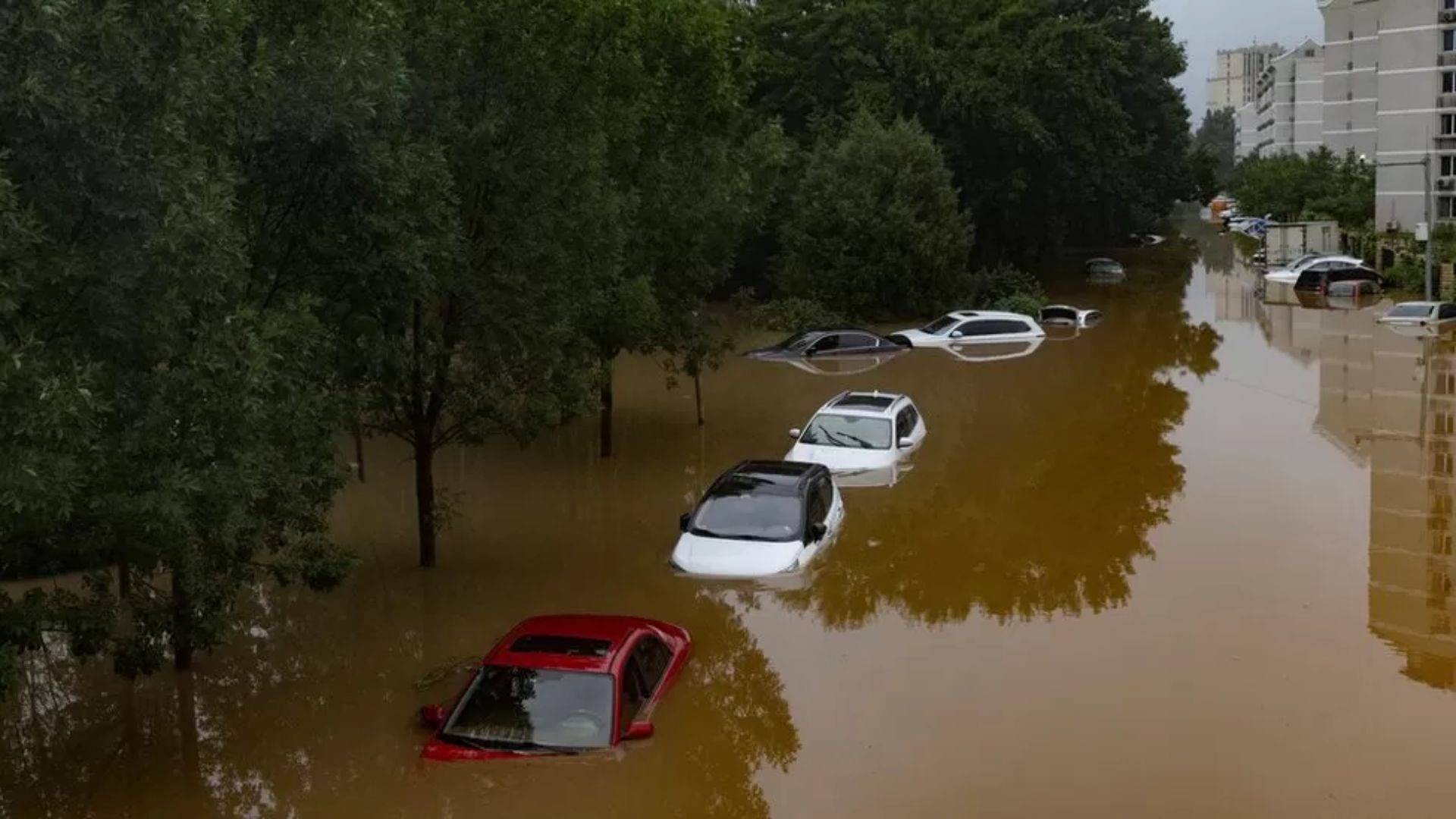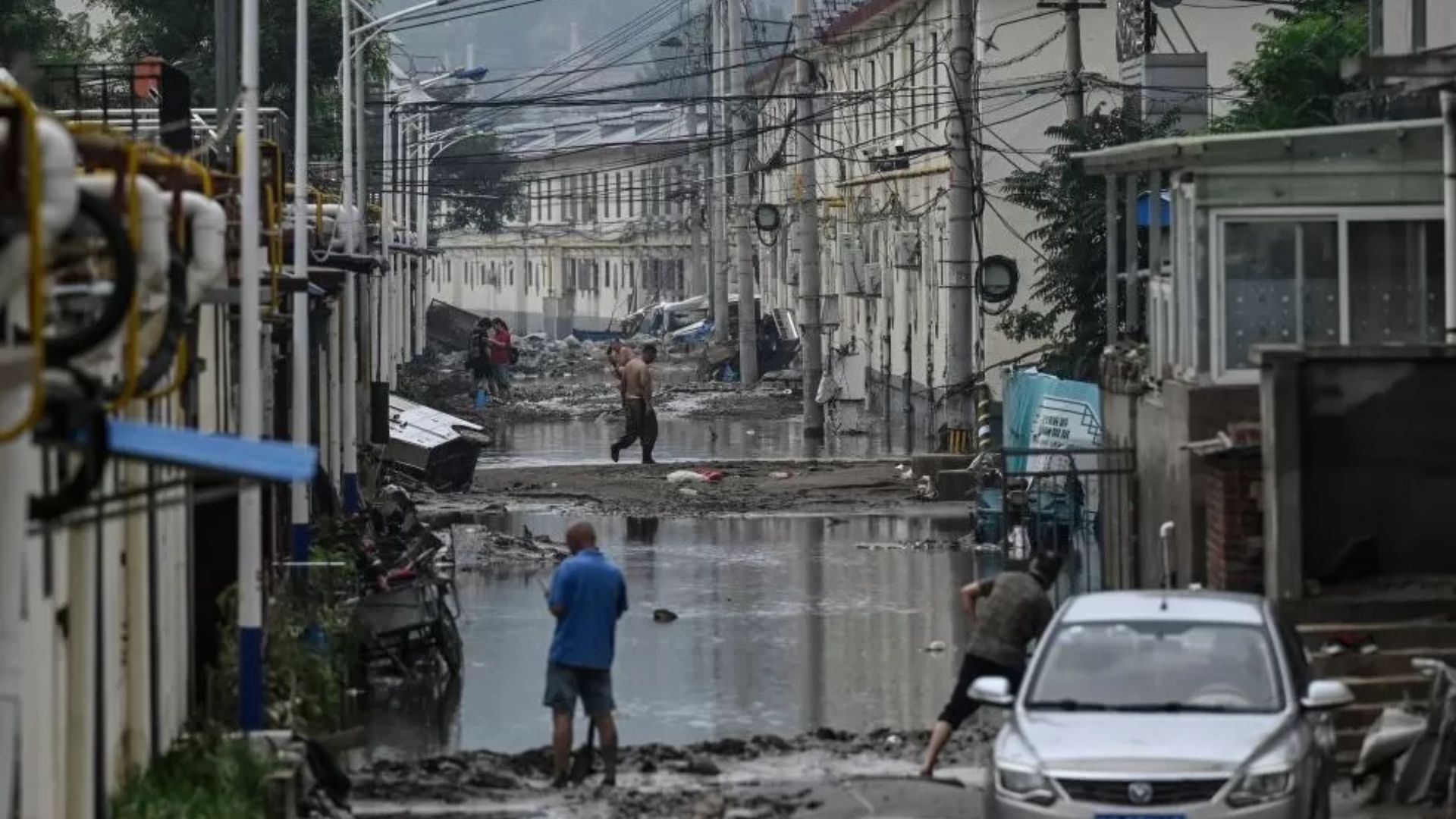Beijing - Tens of thousands of people fled their homes in Beijing after Typhoon Doksuri, one of the strongest storms in years, dumped torrential rain across China, leaving at least four dead and prompting the evacuation of over 31,000 residents in the capital alone. The storm weakened as it moved north but brought heavy rainfall to at least five northern Chinese provinces since Saturday, causing severe flooding and damage.
"Even as Doksuri tapers off, authorities are preparing for incoming Khanun, the sixth typhoon projected to hit China this year," reports Xinhua. Coastal areas of eastern Zhejiang province are expected to be hit by storm tides from Monday to Thursday as Typhoon Khanun approaches.
"In the capital of Beijing alone, the amount of rain over the past week has broken a 140-year-old record," reported meteorological authorities.

Fengtai District, west of Beijing, China/Image - EPA
Doksuri, a former super typhoon, struck China's northeast, including Beijing and neighboring Hebei province, leading to tragic consequences. At least 10 people have died, and 18 others are reported missing. In response to the disaster, officials have undertaken massive evacuations to safeguard millions of people.
The floods have caused significant damage, submerging cars, damaging roads, bridges, and construction sites.

Beijing, China/Image - Reuters
"Since making landfall more than a week ago, former typhoon Doksuri has dumped record amounts of rain on Beijing and surrounding areas, leading to widespread floods," noted meteorologists.
Amid the ongoing disaster, there's also the looming threat of typhoon Khanun, which is out at sea off China's east coast, potentially intensifying rains in areas already impacted by Doksuri.
"Hebei has shouldered a heavy burden to protect the capital, opening up flood control zones along waterways to drain the deluge from Beijing," stated state news agency Xinhua.

Image- Reuters
More than 1.5 million people in Hebei province have evacuated their homes to escape rising floodwaters. About 960,000 of the relocated individuals were from flood control zones in the province neighboring Beijing.
"While the flooding in Hebei province eased on Saturday, the remnants of the storm were being felt to the northeast," reported authorities.
Alarms were sounded for water levels in 25 rivers in Heilongjiang province, and cities like Wuchang and Shangzhi reported serious flooding, trapping residents and causing damage to homes and bridges.
So far, Hebei remains the hardest hit, with at least 20 people killed, and neighboring Liaoning province is also on high alert, covered by a weather warning in effect for much of the country.
Doksuri's impact extends beyond China, with an estimated 14.7 billion yuan ($2 billion) in direct economic losses in China since landing in Fujian province on July 28. Other regions affected include Fujian, Zhejiang, Anhui, Jiangxi, and Guangdong, with approximately 2.91 million people affected.
Furthermore, last month's various natural disasters caused 41 billion yuan in direct economic losses, and the death toll reached 147 people.
The authorities are working tirelessly to coordinate rescue efforts and provide assistance to the affected regions, but the risk of further landslides and floods remains high.
Meanwhile, South Korea is experiencing a deadly heat wave, with at least 10 people dying from heat-related illnesses and over 1,000 people suffering from heat-related diseases in the past weekend alone. The country's heat wave comes just two weeks after torrential rain led to at least 41 deaths from landslides and flash floods.